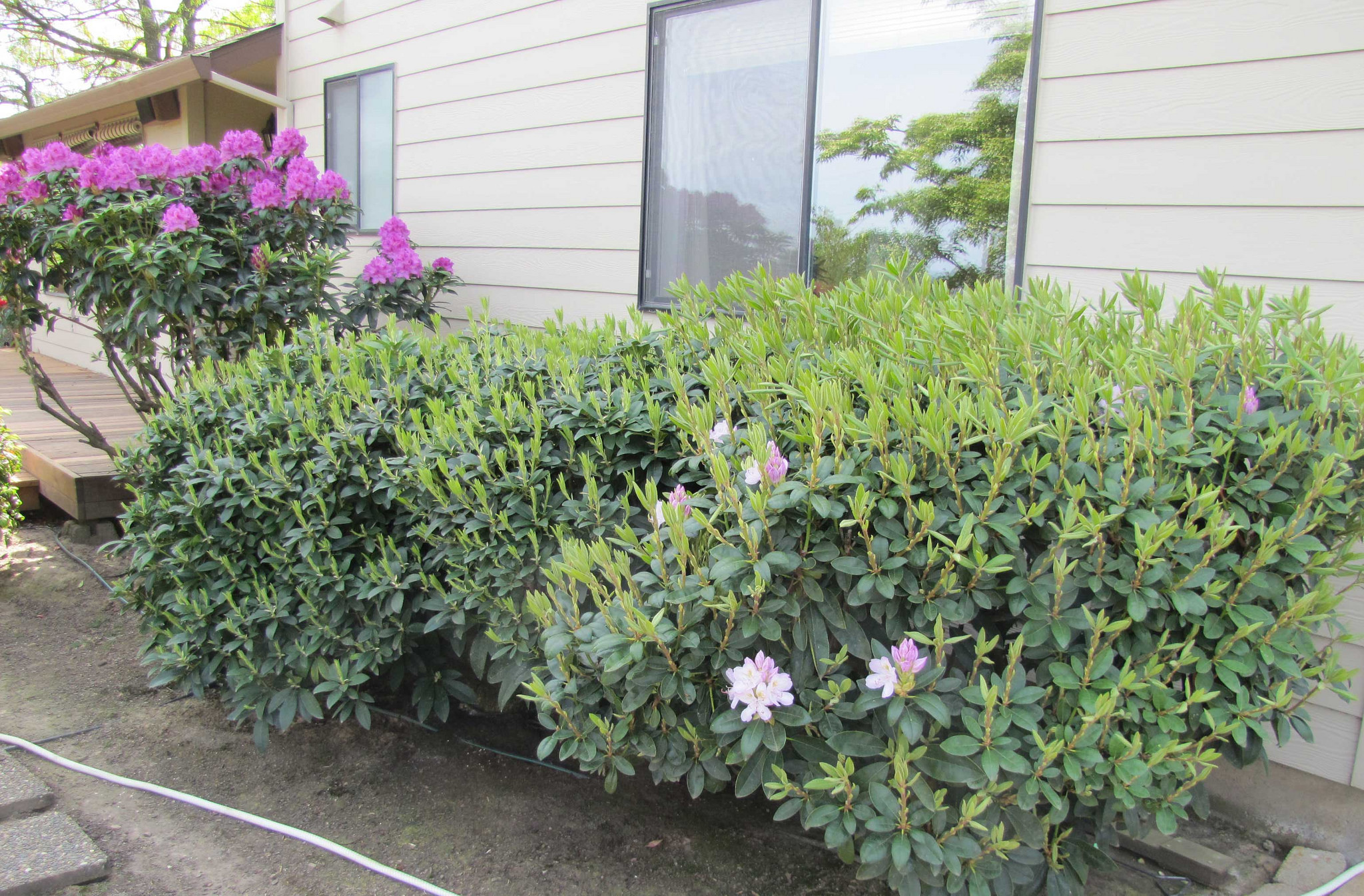No one likes to be told “no,” but sometimes you’ve got to buck up. Even the most seasoned gardener will admit to at least one or two bad habits. You know who you are; you haven’t cleaned your shovel all season. Well, we’ve gathered the expertise of eight of our Oregon State University Extension Service horticulturists to pave the way to the truth. Sorry, you’re going to read the word “no” a lot.
NO: Don’t prune your rhododendron and other spring-blooming plants (lilac, forsythia, azalea, etc.) during the dormant season or you’ll be cutting off the flower buds. Instead, prune right after the flowers fade in spring. – Neil Bell
NO: Don’t plant a Sierra or coast redwood in your garden. Unless that’s the only thing you want in your garden. – Neil Bell
NO: Don’t be ignorant of your plants’ water needs. “We deal with a lot of over-watering and under-watering issues, or as I like to tell folks that they over-love or under-love their plants,” said Rachel Suits, OSU Extension horticulturist. Understanding water requirements is not an easy task and is different for each plant, but simple observation and soil moisture monitoring can help gardeners get a better handle on irrigation, she said.
NO: Don’t plant something in the wrong place. You don’t want to plant your shade-loving hosta on the south-facing wall of your house. Remember: Right plant, right place. – Rachel Suits
NO: Don’t plant aspen in or near turfgrass. These trees create groves and suckers will come up through the lawn. Be sure you know that aspen create groves and have the space/room for them or select another tree for planting adjacent or near turf. – Amy Jo Detweiler
NO: Don’t choose a plant based on what it looks like in the container at the nursery. Make sure you take into account how big it will be in 20 years. Too-big trees get topped, which looks bad and is not good for the tree because it leaves large pruning wounds ripe for disease and insect infestation. – Heather Stoven
NO: Don’t rely on compost for everything. People assume that compost is fertilizer and provides all of the nutrients plants need, especially in vegetable gardening. Compost helps with soil structure but does not necessarily provide key plant nutrients. Buy fertilizer too and use it! – Weston Miller
NO: Don’t overplant. Plan for the long term. Get a piece of gridded paper on which to plan out planting areas and count each square as a square foot. Research what the eventual size of your plant will become and plan accordingly. Especially important is to consider are the plants that you place close to the house. Meanwhile, you can fill the areas in with annuals and plants that you might be able to move to other parts of your landscape later on. You’ll have more mature plants at less cost! — Scott Thiemann
NO: Don’t reach for a broad spectrum pesticide without identifying the problem first. Getting the problem diagnosed can save money by determining if there is a real pest issue and then tailoring the management to the timing and the method that works best. It protects the environment from unnecessary pesticide applications, too. Call or go see an OSU Extension Master Gardener, who can help diagnose your problem. – Brooke Edmunds
NO: Don’t skimp on the requirements for planting a tree. Take the time to prepare the soil, plant at the proper depth, select the best type of tree for the location and give TLC for the first few years. The effort in establishing a tree pays off down the road. Take a look at the app Planting and Caring for a New Tree for more particulars. – Brooke Edmunds
NO: Don’t think that a raised bed is a wonderful way to have a great garden soil quickly. The main problem with raised beds is that the gardener has to buy the medium to fill the raised bed frame. When a gardener does that they have no idea if the medium is soil and where it came from, or if it is a blend of soil and other materials. Not knowing what kind of soil or blend you will get makes it difficult to know whether it needs certain nutrients and how much. It is a good idea to ask the medium provider what type of soil they sell (sand, silt, clay), has anything been blended with the soil (organic material), and have they had their soil tested for nutrients or contaminants. If the medium supplier can’t answer your questions, you may want to collect a sample of the medium and send it to a testing lab. Once you know what kind of medium or soil nutrients your raised bed has you will be able to make additions that will provide a good growing environment. Get more information in Extension’s publication Raised Bed Gardening. – Stephen Renquist
NO: Don’t plant fruit trees without understanding how much care goes into producing good-quality fruit. Fruit tree care is not easy. It requires year-round attention from planting the tree in a well-drained soil where it will get at least 10 hours of sunlight, to proper training and pruning, thinning fruit, using a low input pest spray program, and providing water and fertilizer during the growing season. Fruit trees that are not cared for can also spread disease and insect pests to neighboring areas. There is a whole raft of publications in OSU Extension’s catalog to coach a gardener to make low input pest management decisions that will help you grow quality fruit. Just search for “fruit tree.” – Stephen Renquist
One thought on “Just say ‘no’ to bad gardening practices”
Comments are closed.


Why don’t plant redwood in your yard? Would dawn redwood also apply?